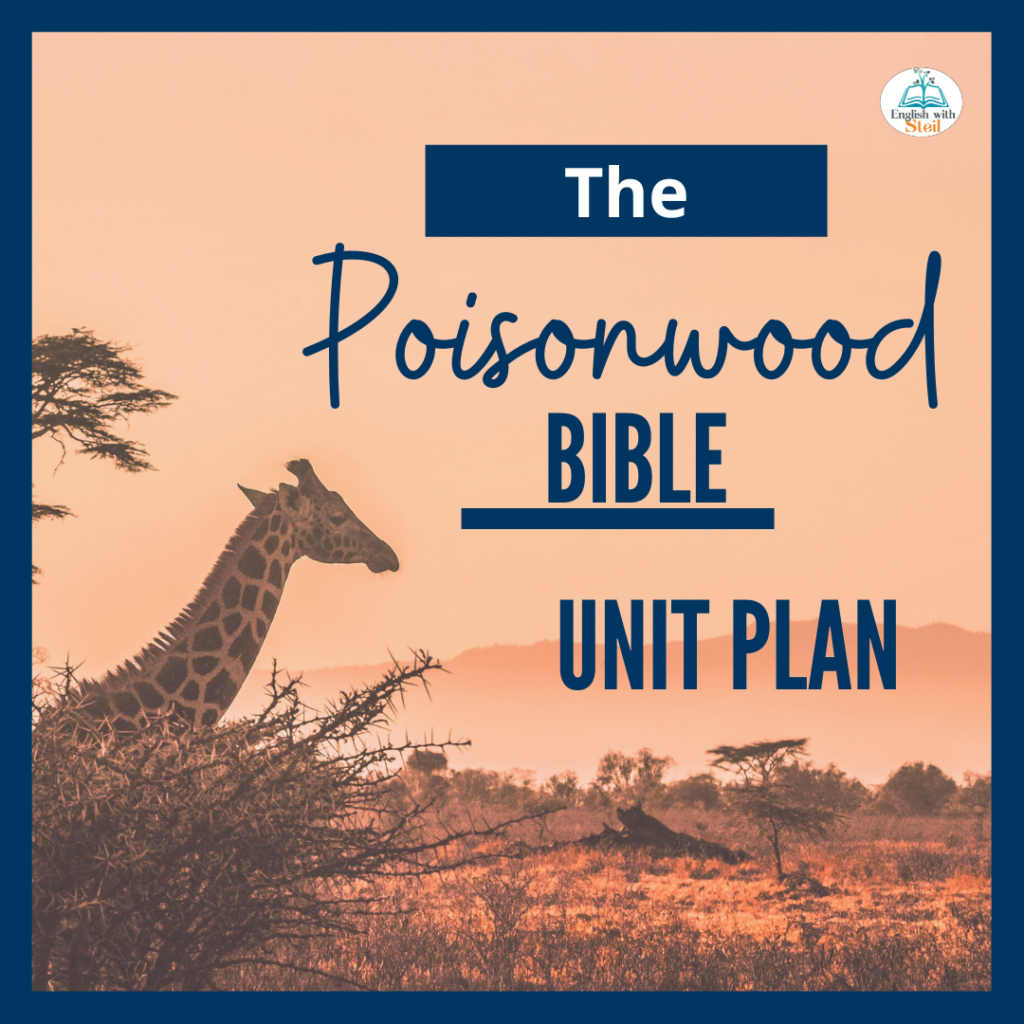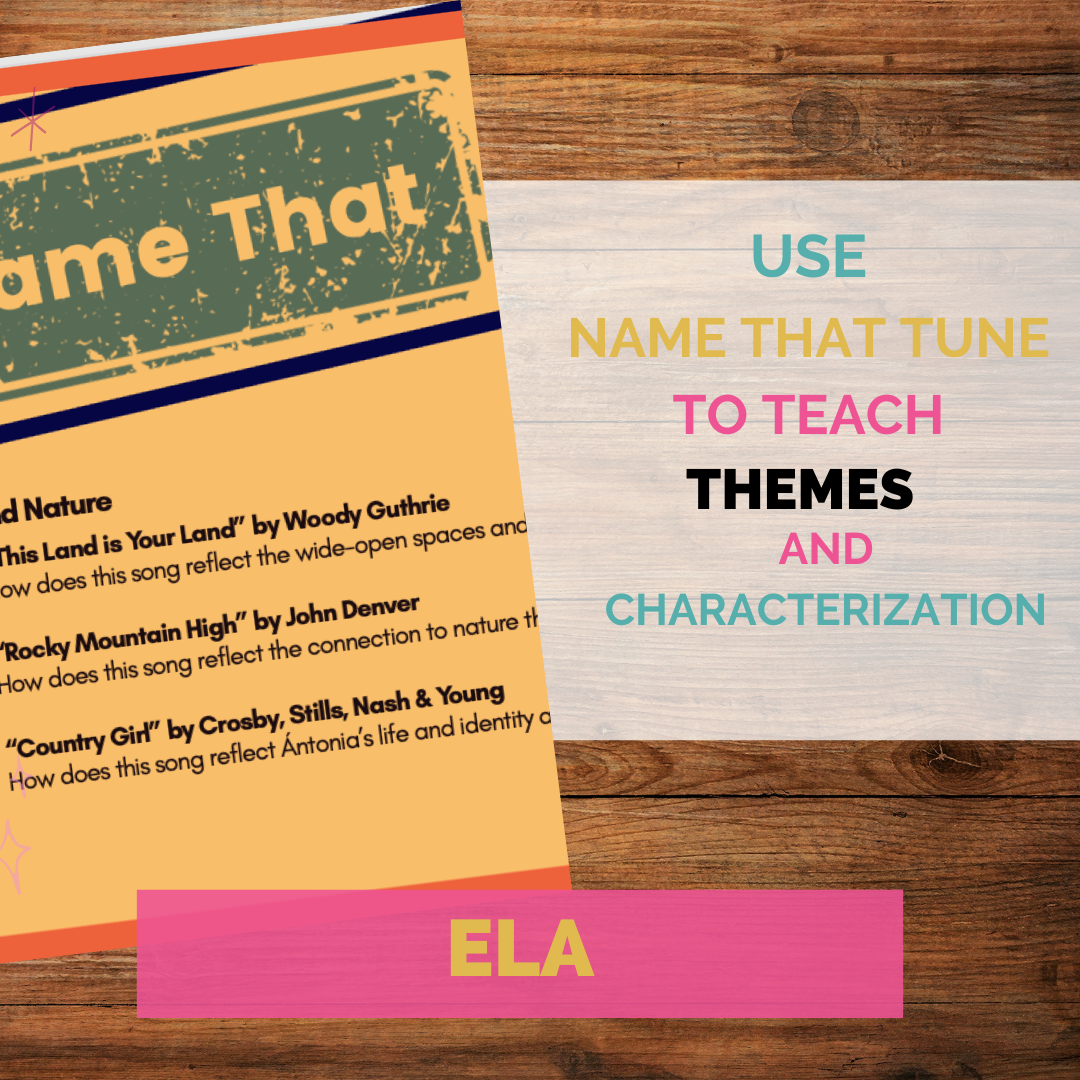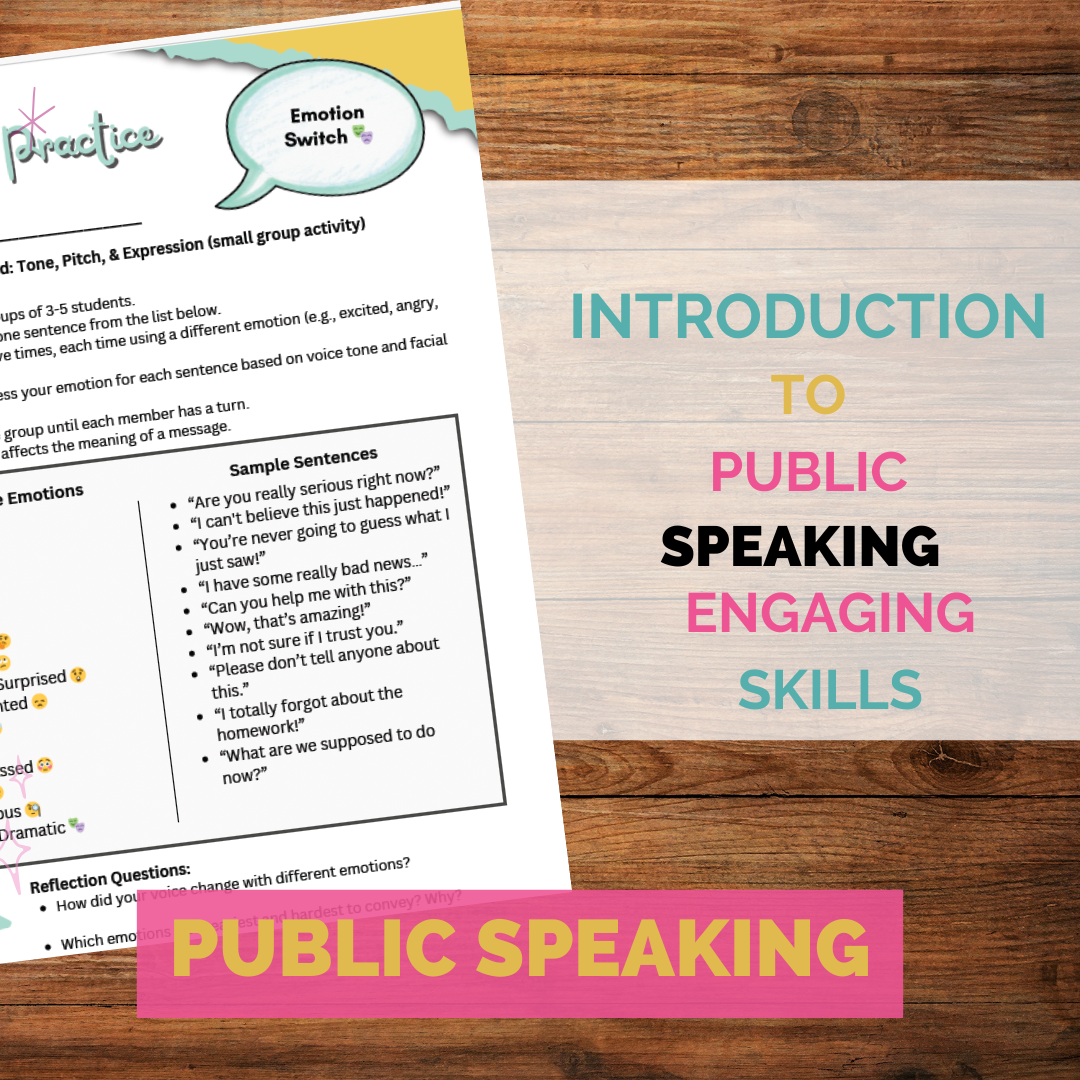Alright, teacher friend, let’s talk about he Poisonwood Bible by Barbara Kingsolver,. I’ll be honest—this novel and I didn’t exactly start off on the best terms. The first two times I attempted to read it, I just couldn’t push through. Rachel’s narcissistic rambling made me want to scream, and don’t even get me started on Nathan Price’s self-righteous, egotistical nonsense. But people raved about this book! Everyone kept telling me how incredible Kingsolver’s writing was, how her imagery was breathtaking, and how the storyline was both layered and emotionally gripping. It wasn’t until my thirdattempt that I finally got it—one of those “Aha!” moments Oprah always talked about. And let me tell you, once it clicked, I couldn’t put it down.
So when I decided to teach The Poisonwood Bible in my classroom, I knew I had to do better than my first two failed attempts. I needed to find ways to hook my students right away so they wouldn’t give up on it like I did. I wanted them to be captivated by the unique perspectives, the rich symbolism, and the complex historical and political layers woven throughout the novel. I put together a unit plan that goes beyond just tracking the plot—it dives deep into Kingsolver’s literary brilliance and makes The Poisonwood Bible an unforgettable experience for students.
Why Teach The Poisonwood Bible?
So, why should you teach this novel? The simple answer: It’s a masterpiece. But let’s break it down.
- Multiple Perspectives: Kingsolver tells the story through five distinct female voices, each offering a unique lens on the events unfolding around them. This makes it a fantastic book for teaching point of view, voice, and unreliable narration.
- Powerful Themes: Colonization, religion, feminism, family dynamics, guilt, redemption—this novel covers it all. Your students will have so many connections to discuss.
- Historical and Political Relevance: The novel doesn’t just tell the story of a missionary family; it’s also a powerful exploration of the political upheaval in the Congo. There’s a ton of crossover potential with social studies.
- Lush Language and Style: Kingsolver’s writing is simply stunning. She weaves symbolism, metaphors, and historical references into every chapter, making this an English teacher’s dream novel for literary analysis.
- Engagement Through Controversy: Let’s be honest, Nathan Price is the worst. His extreme religious views, abusive behavior, and refusal to listen to reason make him an excellent character for debate and critical discussion.
Now, let’s dive into the best ways to teach this novel and get your students fully invested!
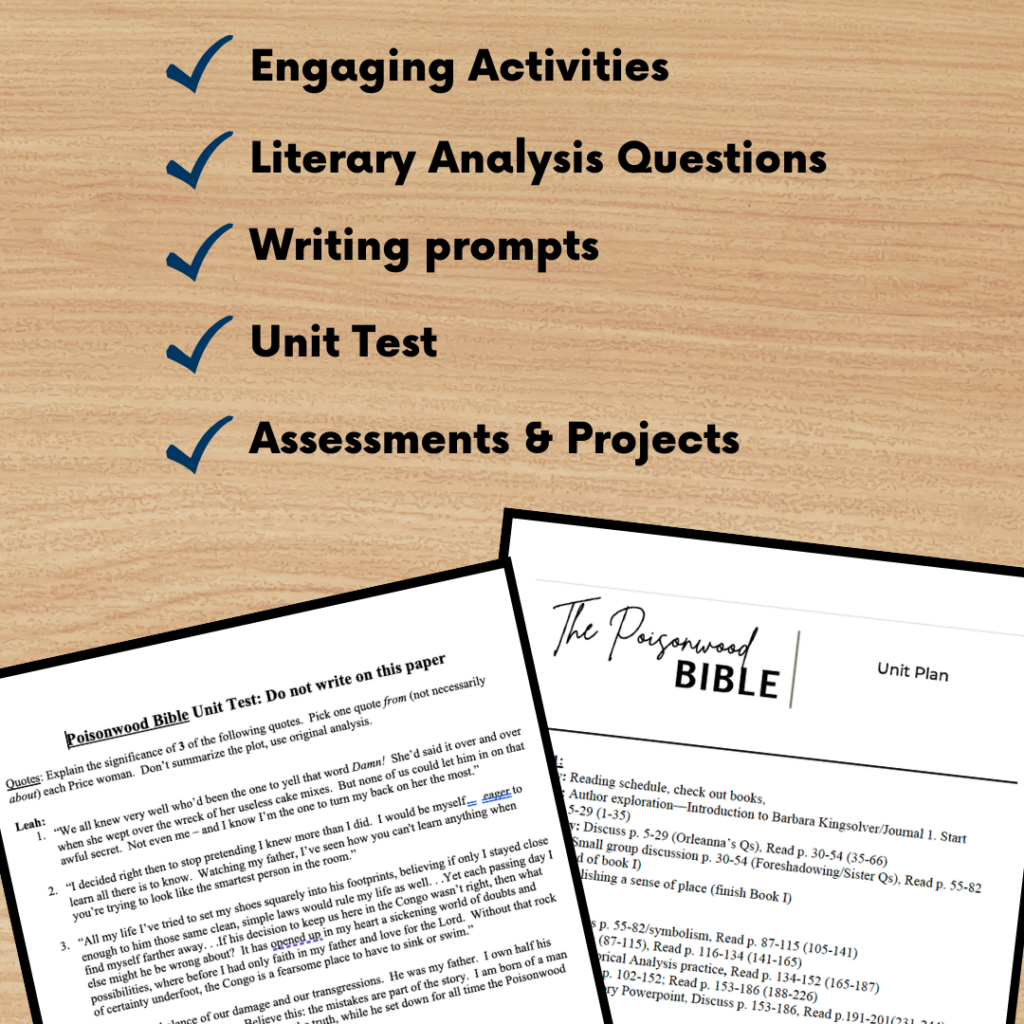

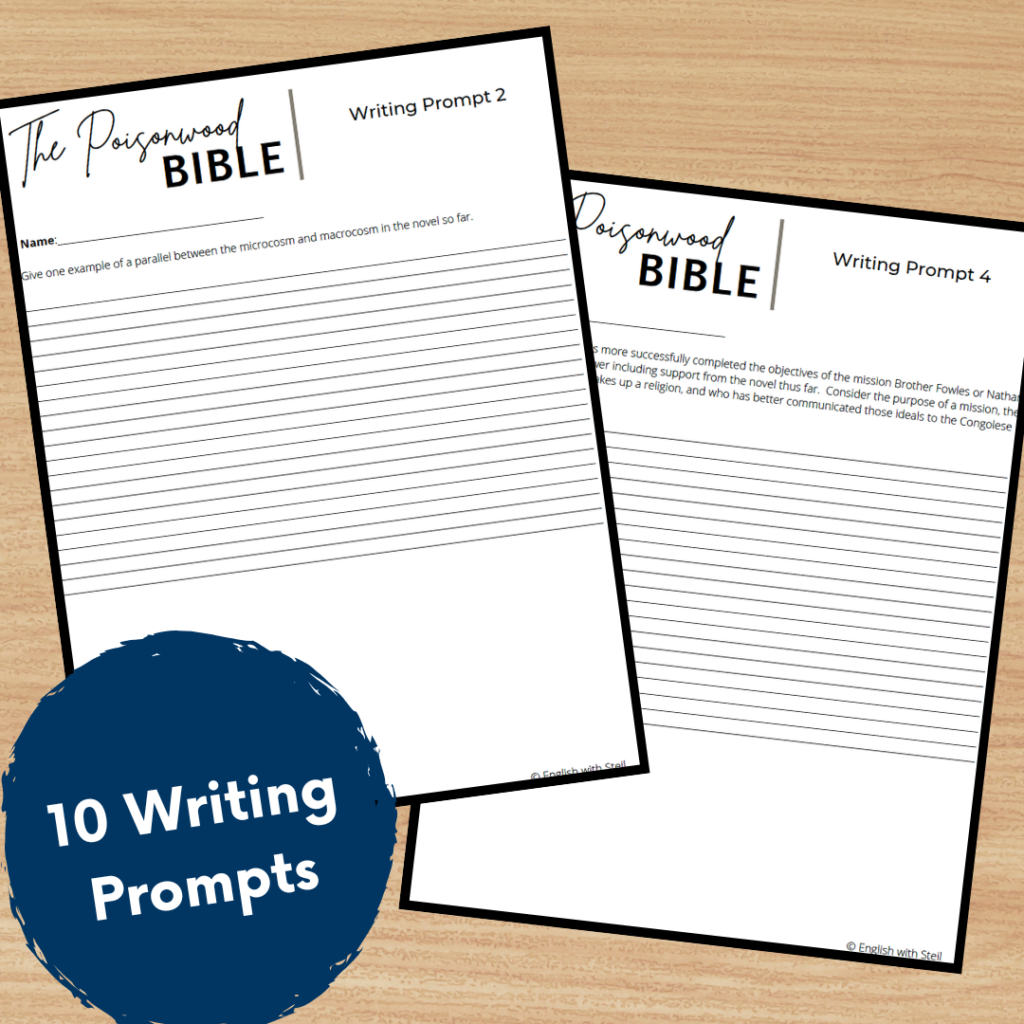
1. Exploring Language and Voice
One of the things Kingsolver nails in this novel is creating distinct voices for each of the Price women. Instead of just telling my students, “Hey, these characters all sound different,” I have them prove it by tracking language patterns and rhetorical techniques.
- Rachel’s Narcissistic Babbling: I challenge my students to find all the malapropisms Rachel uses (which, let’s be honest, are hilarious). Then we discuss what these errors reveal about her personality—her self-absorption, lack of awareness, and complete misunderstanding of the world around her.
- Leah’s Literal, Logical Thinking: Leah is the “truth teller” early on, and I have students analyze how her straightforward language reflects her initial blind faith in her father. We also track how her voice evolves as she gains more independence.
- Adah’s Cynical, Poetic Narration: Adah speaks in palindromes, sees the world from an inverted perspective, and brings a dark, witty edge to the novel. I have my students rewrite key scenes through Adah’s perspective to see how she would twist or reframe the narrative.
- Ruth May’s Innocence: Since Ruth May is just five years old, her language is simple, but she often drops hugetruths without even realizing it. I ask my students to find moments where Ruth May unknowingly reveals important political or social commentary.
This activity really helps students hear the characters’ distinct voices and recognize how language reveals personality and perspective.
2. The Poisonwood Bible as a Historical and Political Mirror
I always start this unit with a history lesson. Why? Because the Congo’s actual history is just as dramatic and tragic as the Price family’s story. Students need to understand the political instability of the region during the time the Prices lived there.
Macrocosm: The Political Unrest in the Congo
We examine key historical figures like Patrice Lumumba, Joseph Mobutu, and Dwight Eisenhower and discuss their influence on the Congo. Understanding these real-world events helps students connect with the novel’s deeper themes.
Microcosm: The Price Family as a Reflection of Colonialism
Then we zoom in on how the struggles within the Price family mirror the chaos in the Congo:
- Nathan Price = Western Imperialism. His relentless, forceful approach to Christianity mirrors the way Western nations imposed their own beliefs and values onto Africa.
- Orleanna Price = The U.S. Government. She initially goes along with Nathan’s mission but eventually realizes the damage he’s doing—just as America originally supported leaders like Mobutu before seeing the long-term consequences.
- The Price Daughters = The Congolese People. Each daughter’s journey reflects a different reaction to colonization—rebellion, resignation, assimilation, or resistance.
Once students see these connections, they get so much more out of the novel.
3. Making Thematic Connections
The big themes in this novel are power, religion, guilt, redemption, and colonization. Instead of just telling my students what the themes are, I have them discover them through discussion prompts, journaling, and projects.
Here are some activities that work really well:
- The Guilt Project: Have students track guilt in the novel—who carries it, how they deal with it, and whether they ever find redemption. Then, they reflect on real-world examples of guilt (historical injustices, personal experiences, etc.).
- Religious Interpretation Debate: Is Nathan Price a true man of faith, or is he manipulating religion for power? Split students into two groups and have them defend their perspective using textual evidence.
- Colonization Research Assignment: Assign students different African nations affected by European colonization. Have them compare their findings to what happens in The Poisonwood Bible.
Exploring Macrocosm in The Poisonwood Bible
Early in the unit, I give my students a little history lesson on the Congo to help them understand some historical basics. The Congo was such a politically unstable country during the time period the novel take place and it’s important to help students see the big picture. We talk about key political figures and their impact and influence in the novel. Understanding those interactions sets the stage for making comparisons between the Congo and the complex relationships between the members of the Price family.
Exploring Microcosm in the Poisonwood Bible
There’s no question Nathan was a domineering father who ruled over his family much like Mobutu ruled over the Congo. At so many key points during the novel, readers can trace parallels between the Congo and the Congolese people to Nathan and the Price women. Their highs are high and their lows are tragically low. Through discussion questions, journal prompts, and activities, I try to guide my students through literary analysis comparing the macro level plot line of the Congolese history to the microcosm of the day-to-day life of the Price family.
Here are some examples of the macrocosm and microcosm parallels in the novel:
- When the Price family arrives in the *Congo, they are hopeful, excited and ready for a new yearlong adventure. At the same time, Patrice Lumumba is elected as prime minister and Joseph Kasavubu as president of the renamed Democratic Republic of the Congo. Promises are made and expectations are high for both the Congo and the Price family.
- As the Price family continues to spiral into despair and poverty, so does the Congo. Both are fighting against systems and leaders who are unable to provide for the people in their care. Through discussion questions, I encourage students to draw comparisons between events in the novel and the historical events occurring in the Congo at the time.
- Ruth May’s unfortunate and premature death coincides with Lumumba’s death. I use this journal prompt to help students begin to make connections between these two tragic events the macro level and micro level.
- Finally, the last third of the novel transcends a 20-year period, as the Price family continues to flounder and strive for healing, much like the Congo does under Motbuto’s rule. There are great opportunities to teach the concept of *fallacies of logic to students and have them trace the many ways in with Congolese leaders and Nathan Prices spun falsehoods through the novel.
Teaching The Poisonwood Bible: Engaging Ideas to Hook Your Students
Alright, teacher friend, let’s talk about The Poisonwood Bible by Barbara Kingsolver. I’ll be honest—this novel and I didn’t exactly start off on the best terms. The first two times I attempted to read it, I just couldn’t push through. Rachel’s narcissistic rambling made me want to scream, and don’t even get me started on Nathan Price’s self-righteous, egotistical nonsense. But people raved about this book! Everyone kept telling me how incredible Kingsolver’s writing was, how her imagery was breathtaking, and how the storyline was both layered and emotionally gripping. It wasn’t until my thirdattempt that I finally got it—one of those “Aha!” moments Oprah always talked about. And let me tell you, once it clicked, I couldn’t put it down.
So when I decided to teach The Poisonwood Bible in my classroom, I knew I had to do better than my first two failed attempts. I needed to find ways to hook my students right away so they wouldn’t give up on it like I did. I wanted them to be captivated by the unique perspectives, the rich symbolism, and the complex historical and political layers woven throughout the novel. I put together a unit plan that goes beyond just tracking the plot—it dives deep into Kingsolver’s literary brilliance and makes The Poisonwood Bible an unforgettable experience for students.
Why Teach The Poisonwood Bible?
So, why should you teach this novel? The simple answer: It’s a masterpiece. But let’s break it down.
- Multiple Perspectives: Kingsolver tells the story through five distinct female voices, each offering a unique lens on the events unfolding around them. This makes it a fantastic book for teaching point of view, voice, and unreliable narration.
- Powerful Themes: Colonization, religion, feminism, family dynamics, guilt, redemption—this novel covers it all. Your students will have so many connections to discuss.
- Historical and Political Relevance: The novel doesn’t just tell the story of a missionary family; it’s also a powerful exploration of the political upheaval in the Congo. There’s a ton of crossover potential with social studies.
- Lush Language and Style: Kingsolver’s writing is simply stunning. She weaves symbolism, metaphors, and historical references into every chapter, making this an English teacher’s dream novel for literary analysis.
- Engagement Through Controversy: Let’s be honest, Nathan Price is the worst. His extreme religious views, abusive behavior, and refusal to listen to reason make him an excellent character for debate and critical discussion.
Now, let’s dive into the best ways to teach this novel and get your students fully invested!
1. Exploring Language and Voice
One of the things Kingsolver nails in this novel is creating distinct voices for each of the Price women. Instead of just telling my students, “Hey, these characters all sound different,” I have them prove it by tracking language patterns and rhetorical techniques.
- Rachel’s Narcissistic Babbling: I challenge my students to find all the malapropisms Rachel uses (which, let’s be honest, are hilarious). Then we discuss what these errors reveal about her personality—her self-absorption, lack of awareness, and complete misunderstanding of the world around her.
- Leah’s Literal, Logical Thinking: Leah is the “truth teller” early on, and I have students analyze how her straightforward language reflects her initial blind faith in her father. We also track how her voice evolves as she gains more independence.
- Adah’s Cynical, Poetic Narration: Adah speaks in palindromes, sees the world from an inverted perspective, and brings a dark, witty edge to the novel. I have my students rewrite key scenes through Adah’s perspective to see how she would twist or reframe the narrative.
- Ruth May’s Innocence: Since Ruth May is just five years old, her language is simple, but she often drops hugetruths without even realizing it. I ask my students to find moments where Ruth May unknowingly reveals important political or social commentary.
This activity really helps students hear the characters’ distinct voices and recognize how language reveals personality and perspective.
2. The Poisonwood Bible as a Historical and Political Mirror
I always start this unit with a history lesson. Why? Because the Congo’s actual history is just as dramatic and tragic as the Price family’s story. Students need to understand the political instability of the region during the time the Prices lived there.
Macrocosm: The Political Unrest in the Congo
We examine key historical figures like Patrice Lumumba, Joseph Mobutu, and Dwight Eisenhower and discuss their influence on the Congo. Understanding these real-world events helps students connect with the novel’s deeper themes.
Microcosm: The Price Family as a Reflection of Colonialism
Then we zoom in on how the struggles within the Price family mirror the chaos in the Congo:
- Nathan Price = Western Imperialism. His relentless, forceful approach to Christianity mirrors the way Western nations imposed their own beliefs and values onto Africa.
- Orleanna Price = The U.S. Government. She initially goes along with Nathan’s mission but eventually realizes the damage he’s doing—just as America originally supported leaders like Mobutu before seeing the long-term consequences.
- The Price Daughters = The Congolese People. Each daughter’s journey reflects a different reaction to colonization—rebellion, resignation, assimilation, or resistance.
Once students see these connections, they get so much more out of the novel.
3. Making Thematic Connections
The big themes in this novel are power, religion, guilt, redemption, and colonization. Instead of just telling my students what the themes are, I have them discover them through discussion prompts, journaling, and projects.
Here are some activities that work really well:
- The Guilt Project: Have students track guilt in the novel—who carries it, how they deal with it, and whether they ever find redemption. Then, they reflect on real-world examples of guilt (historical injustices, personal experiences, etc.).
- Religious Interpretation Debate: Is Nathan Price a true man of faith, or is he manipulating religion for power? Split students into two groups and have them defend their perspective using textual evidence.
- Colonization Research Assignment: Assign students different African nations affected by European colonization. Have them compare their findings to what happens in The Poisonwood Bible.
Final Thoughts
If you’re on the fence about teaching The Poisonwood Bible, let me just say—it’s worth it. This novel offers so many opportunities for deep analysis, creative activities, and meaningful discussions. Yes, it’s dense, and yes, it might take students a little while to get into it, but once they’re hooked, they’re hooked.
I’ve had students tell me that this was the best book they read all year. They come away from it with a new understanding of history, politics, and the power of perspective in storytelling.
So, teacher friend, if you’re ready to dive into this literary masterpiece, grab your highlighters, prep your discussion questions, and get ready for some of the best classroom conversations you’ll have all year!
